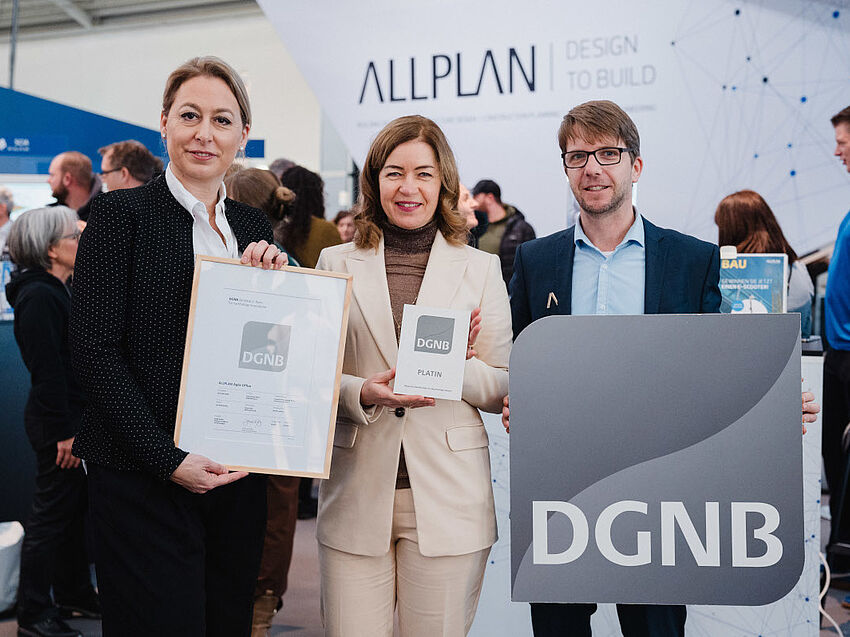Building a Greener Future: How ALLPLAN is Leading the Way in Sustainable Practices
As we move into the era of eco-conscious construction, those materials that blend the best of traditional building components with cutting-edge sustainability enhancements will become the norm. From carbon-fiber reinforced concrete to the revolutionary concept of hemp rebar, this collection showcases how innovation is strengthening, improving, and extending both the sustainability and capabilities of well-known materials. Keep reading to learn how these five materials are not just evolving construction practices but are also laying down the foundations for a more sustainable future.
Carbon-fiber Reinforced Concrete
The Cube, a pioneering architectural project by Henn Architekten and the Technical University of Dresden, showcases the remarkable capabilities of carbon-fiber reinforced concrete (not to be confused with carbon concrete.) This innovative material, which integrates carbon fiber yarn into concrete, significantly enhances structural strength, allowing for a significant reduction in the amount of concrete required for construction. This collaboration has culminated in the creation of the world’s first building made entirely from carbon-fiber reinforced concrete, serving both as a laboratory and event space for the university.

The Cube’s design leverages the lightweight and superior strength of carbon fiber, enabling a slender, twisting facade that could not be achieved with traditional materials. Furthermore, carbon fiber’s rust-proof nature and conductivity introduce new functionalities, such as built-in heating elements and structural integrity monitoring. This technology not only promises to reduce the environmental impact of construction through material savings but also extends the lifespan of structures, offering a sustainable alternative to conventional building methods.
Self-healing Concrete
Researchers from MIT and Harvard have uncovered the long-held secret behind the enduring strength of ancient Roman concrete, revealing its “self-healing” properties which they aim to adapt for modern use. Unlike modern concrete that uses slaked lime, Roman concrete incorporated quicklime, which interacts with rainwater to form a calcium-saturated solution, effectively healing cracks over time. This discovery could offer a sustainable alternative to steel rebar, which is prone to corrosion and contributes to the premature decay of concrete structures. The use of quicklime not only extends the lifespan of concrete structures, potentially tripling their durability, but also offers environmental benefits by reducing carbon emissions associated with construction materials. In addition, this innovation involves a “hot mixing” process that enhances the material’s ability to self-repair.
Also take a look at wood-concrete – another “old” material that has been rediscovered.
Hemp Rebar
Researchers at Rensselaer Polytechnic Institute have developed hemp rebar, a groundbreaking alternative to steel rebar that resists corrosion and offers a significant reduction in carbon emissions from construction. This innovative rebar, made from hemp fibers encased in thermoplastic, could dramatically extend the lifespan of concrete structures currently limited by steel rebar’s susceptibility to rust. With its potential to triple the service life of buildings, bridges, and other infrastructures, especially in high-salt environments, as well as it’s carbon sequestering abilities, hemp rebar presents a sustainable solution with lower embodied energy compared to traditional materials.
Ultra-strong Plastic
Chemical engineers at the Massachusetts Institute of Technology (MIT) have invented a super-strong plastic which is both light and moldable yet boasts a strength twice that of steel. Called 2DPA-1, its unique two-dimensional sheet structure, unlike the one-dimensional chains of traditional polymers, contributes to its extraordinary strength and durability. Initially envisioned as an ultrathin coating to enhance the durability of various objects, 2DPA-1’s potential as a structural reinforcement material for buildings and infrastructures is particularly promising. With an elastic modulus several times greater than bulletproof glass and a density significantly lower than steel, it offers a new avenue for creating more resilient and efficient structures. Furthermore, its ability to form an impermeable barrier against water and gases could revolutionize the protective coatings used in the AEC industry.
Ultra-thin Solar Cells
MIT engineers have revealed a pioneering advancement in renewable energy technology with the creation of ultrathin, lightweight solar cells. These fabric-based solar cells redefine the possibilities for integrating solar power into our daily lives by making virtually any surface a potential source of energy. Weighing one-hundredth of conventional solar panels yet generating 18 times more power per kilogram, these cells combine the efficiency of semiconducting inks with scalable printing processes. Their practical applications are vast, ranging from wearable power fabrics to emergency power solutions in remote areas, enhancing the adaptability of solar technology to diverse environments. The cells’ durability is also noteworthy, retaining over 90% of their power generation capability even after extensive physical manipulation, such as rolling and unrolling. However, to fully harness their potential while preserving their structural integrity, the team at MIT is exploring ultrathin packaging solutions to protect the cells from environmental factors without significantly increasing their weight.
A Blueprint for Tomorrow
These materials show that the future of construction lies not just in new discoveries but in reimagining and improving upon the materials we’ve relied on for centuries. These advancements promise buildings that are stronger, longer-lasting, and more in harmony with our planet.




